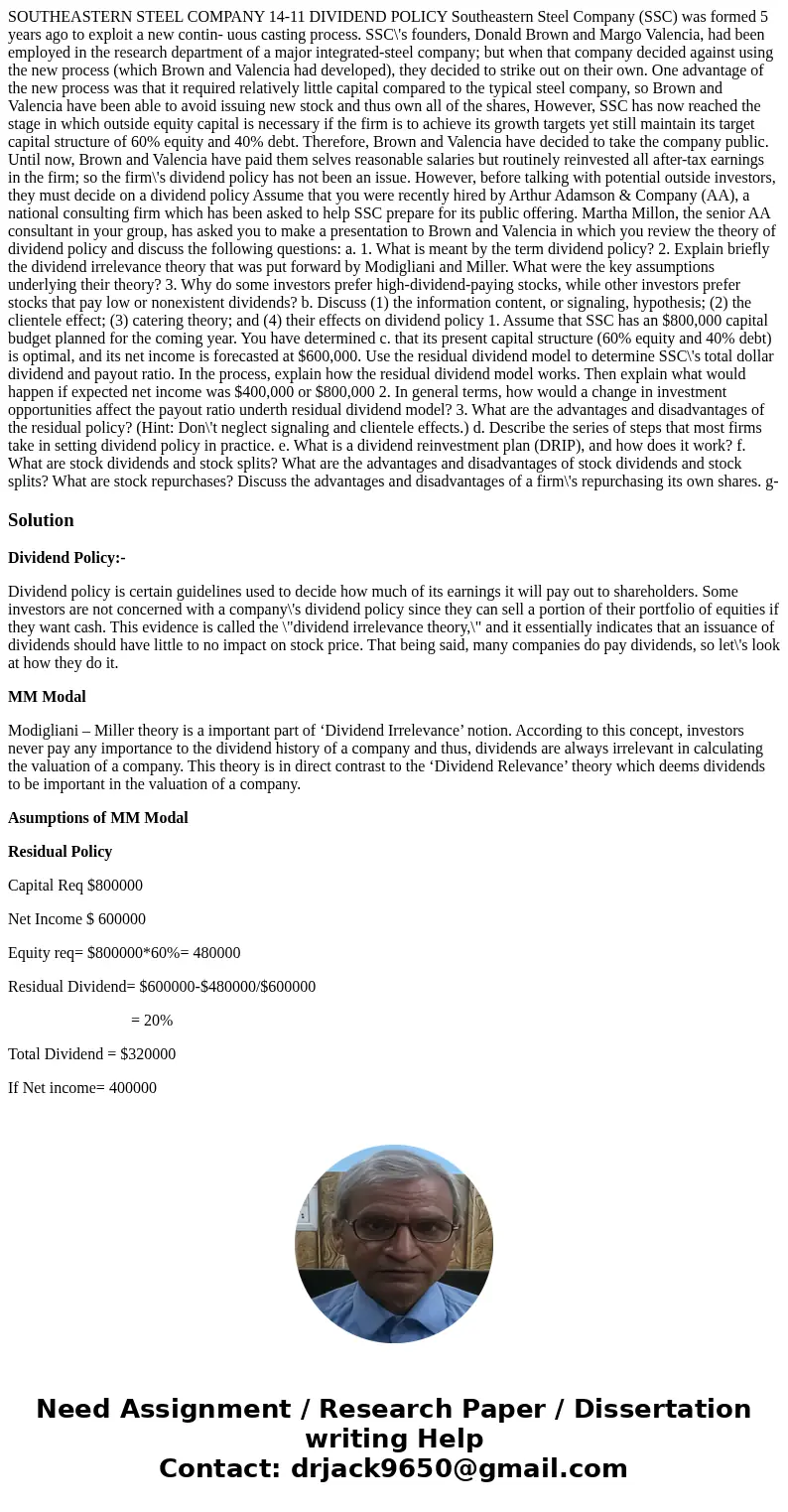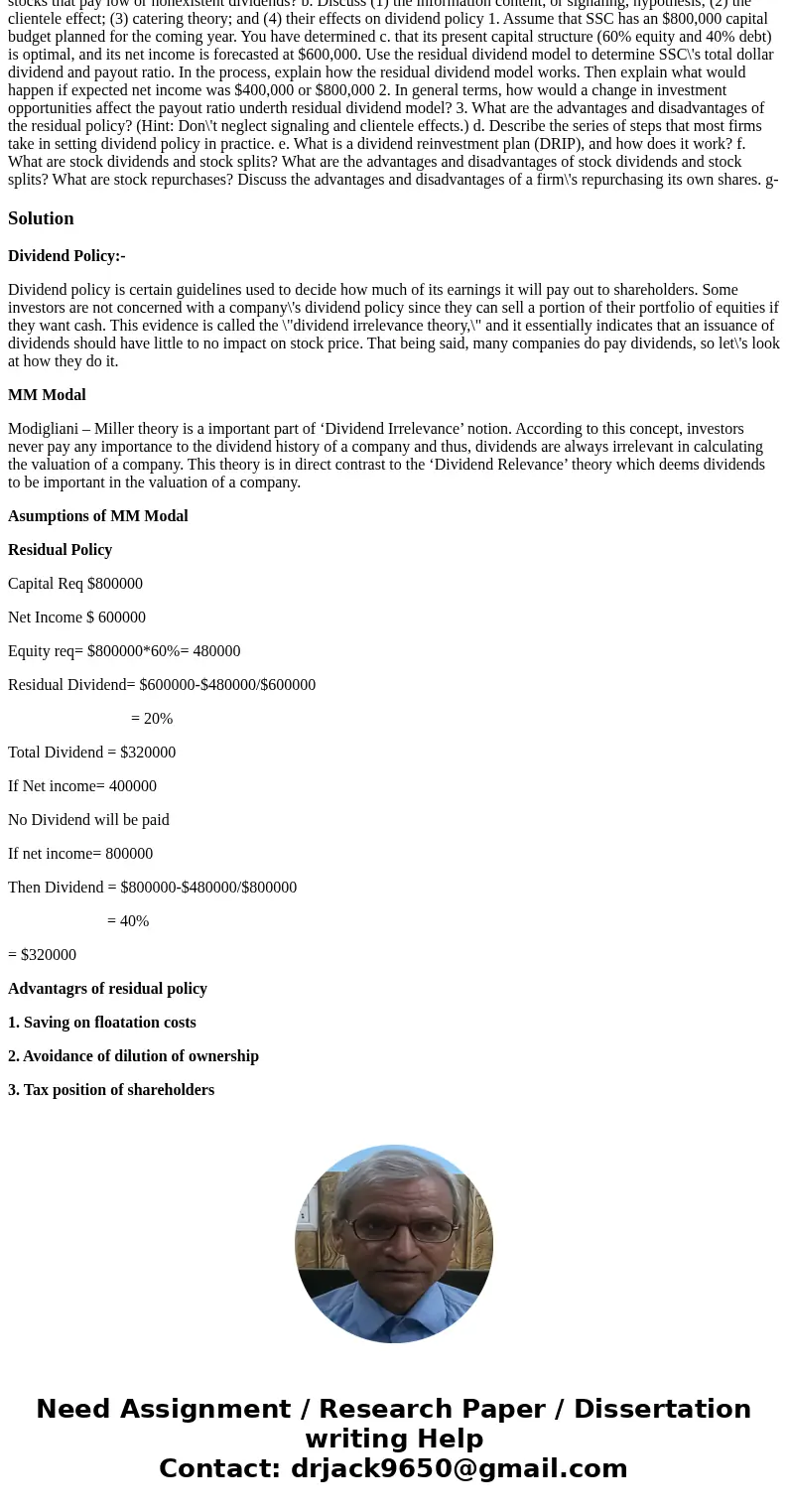SOUTHEASTERN STEEL COMPANY 14-11 DIVIDEND POLICY Southeastern Steel Company (SSC) was formed 5 years ago to exploit a new contin- uous casting process. SSC\'s founders, Donald Brown and Margo Valencia, had been employed in the research department of a major integrated-steel company; but when that company decided against using the new process (which Brown and Valencia had developed), they decided to strike out on their own. One advantage of the new process was that it required relatively little capital compared to the typical steel company, so Brown and Valencia have been able to avoid issuing new stock and thus own all of the shares, However, SSC has now reached the stage in which outside equity capital is necessary if the firm is to achieve its growth targets yet still maintain its target capital structure of 60% equity and 40% debt. Therefore, Brown and Valencia have decided to take the company public. Until now, Brown and Valencia have paid them selves reasonable salaries but routinely reinvested all after-tax earnings in the firm; so the firm\'s dividend policy has not been an issue. However, before talking with potential outside investors, they must decide on a dividend policy Assume that you were recently hired by Arthur Adamson & Company (AA), a national consulting firm which has been asked to help SSC prepare for its public offering. Martha Millon, the senior AA consultant in your group, has asked you to make a presentation to Brown and Valencia in which you review the theory of dividend policy and discuss the following questions: a. 1. What is meant by the term dividend policy? 2. Explain briefly the dividend irrelevance theory that was put forward by Modigliani and Miller. What were the key assumptions underlying their theory? 3. Why do some investors prefer high-dividend-paying stocks, while other investors prefer stocks that pay low or nonexistent dividends? b. Discuss (1) the information content, or signaling, hypothesis; (2) the clientele effect; (3) catering theory; and (4) their effects on dividend policy 1. Assume that SSC has an $800,000 capital budget planned for the coming year. You have determined c. that its present capital structure (60% equity and 40% debt) is optimal, and its net income is forecasted at $600,000. Use the residual dividend model to determine SSC\'s total dollar dividend and payout ratio. In the process, explain how the residual dividend model works. Then explain what would happen if expected net income was $400,000 or $800,000 2. In general terms, how would a change in investment opportunities affect the payout ratio underth residual dividend model? 3. What are the advantages and disadvantages of the residual policy? (Hint: Don\'t neglect signaling and clientele effects.) d. Describe the series of steps that most firms take in setting dividend policy in practice. e. What is a dividend reinvestment plan (DRIP), and how does it work? f. What are stock dividends and stock splits? What are the advantages and disadvantages of stock dividends and stock splits? What are stock repurchases? Discuss the advantages and disadvantages of a firm\'s repurchasing its own shares. g-
Dividend Policy:-
Dividend policy is certain guidelines used to decide how much of its earnings it will pay out to shareholders. Some investors are not concerned with a company\'s dividend policy since they can sell a portion of their portfolio of equities if they want cash. This evidence is called the \"dividend irrelevance theory,\" and it essentially indicates that an issuance of dividends should have little to no impact on stock price. That being said, many companies do pay dividends, so let\'s look at how they do it.
MM Modal
Modigliani – Miller theory is a important part of ‘Dividend Irrelevance’ notion. According to this concept, investors never pay any importance to the dividend history of a company and thus, dividends are always irrelevant in calculating the valuation of a company. This theory is in direct contrast to the ‘Dividend Relevance’ theory which deems dividends to be important in the valuation of a company.
Asumptions of MM Modal
Residual Policy
Capital Req $800000
Net Income $ 600000
Equity req= $800000*60%= 480000
Residual Dividend= $600000-$480000/$600000
= 20%
Total Dividend = $320000
If Net income= 400000
No Dividend will be paid
If net income= 800000
Then Dividend = $800000-$480000/$800000
= 40%
= $320000
Advantagrs of residual policy
1. Saving on floatation costs
2. Avoidance of dilution of ownership
3. Tax position of shareholders


 Homework Sourse
Homework Sourse